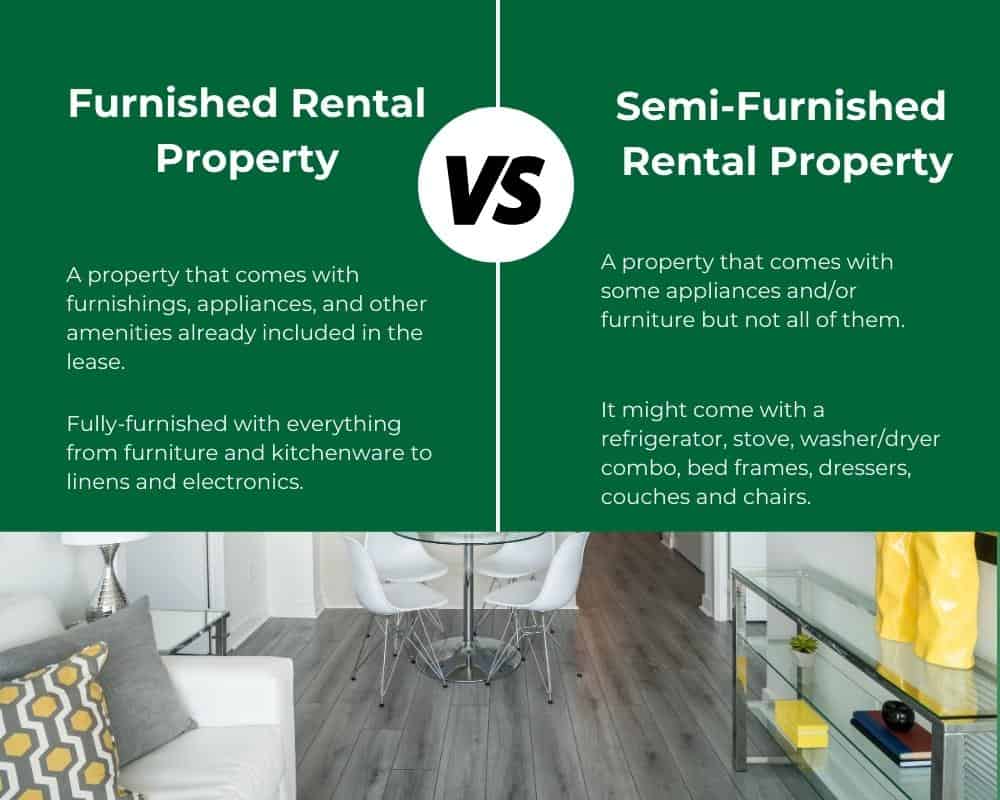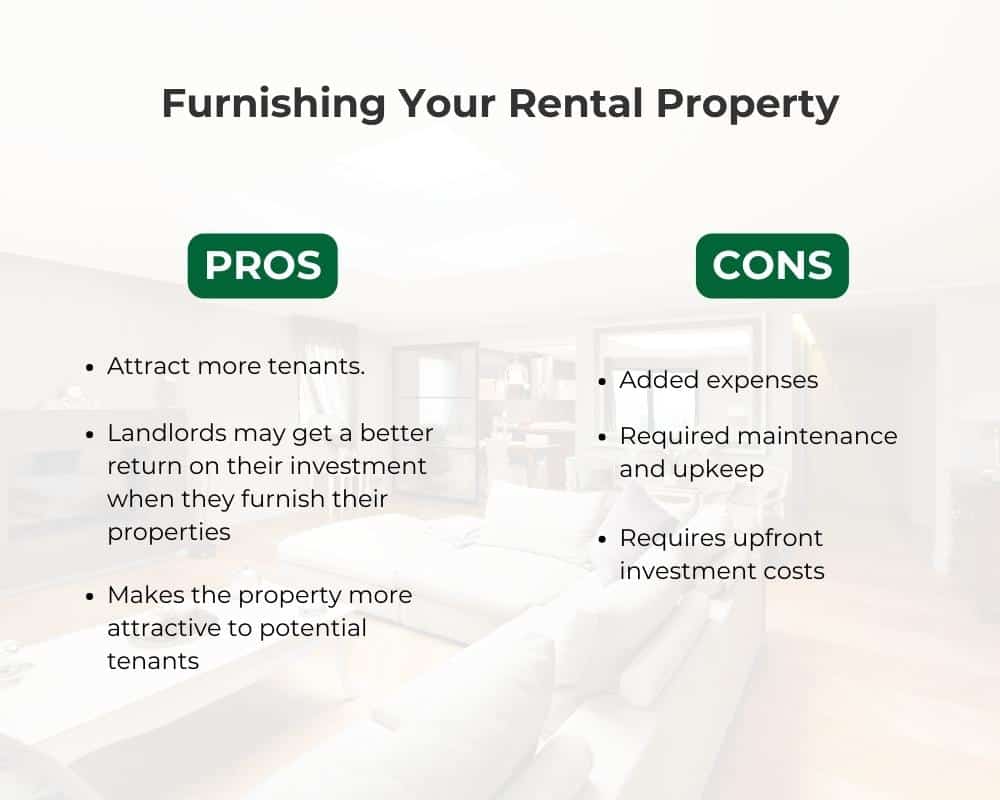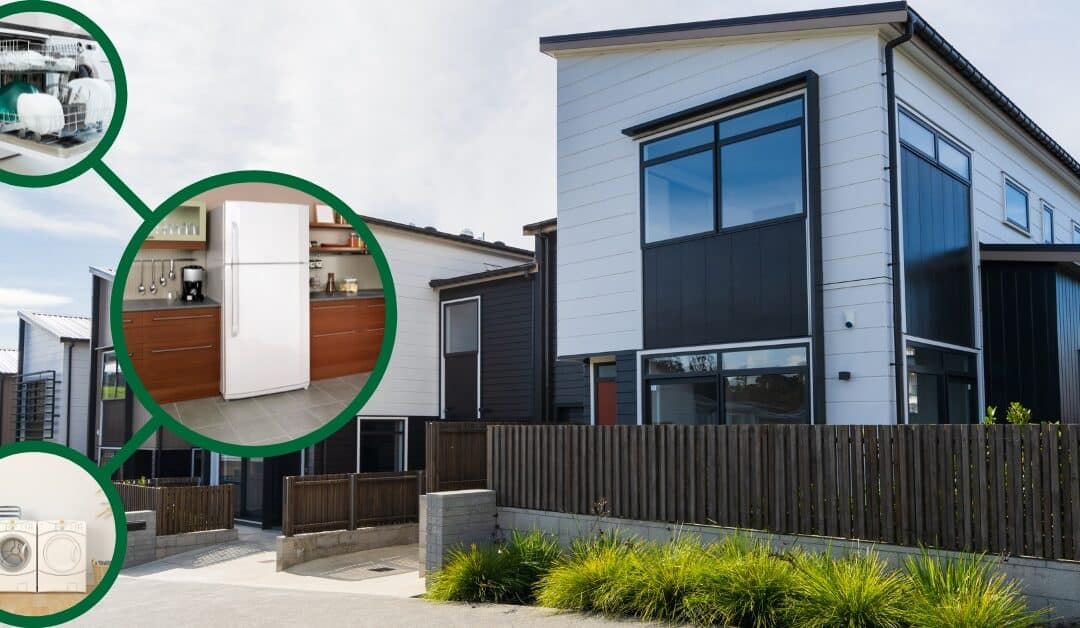As a landlord, it can be tempting to furnish your rental property. After all, renting out a furnished space seems like an easier way to attract tenants and make money. But is it worth it? Before you make up your mind, let’s look at the pros and cons of furnishing your rental property.
What Is A Furnished Rental Property?
A furnished rental property is a property that comes with furnishings, appliances, and other amenities already included in the lease. These properties may be fully-furnished with everything from furniture and kitchenware to linens and electronics. Or they may be partially-furnished with just some of the items provided. The exact specifics will vary depending on the individual landlord’s preferences.

What is a Semi-Furnished Rental?
A semi furnished rental property is one that comes with some appliances and/or furniture but not all of them. For example, it might come with a refrigerator, stove, washer/dryer combo, bed frames, dressers, couches and chairs. These items are typically considered amenities by tenants who don’t want to purchase or rent new furniture when they move in.
Pros of Furnishing Your Rental Property
Furnished rentals can attract more tenants. One of the biggest advantages of furnishing a rental property is that it makes the property more attractive to potential tenants. This is especially true for short-term rentals such as vacation homes or corporate housing. These types of renters often don’t have the time or desire to bring their own furniture or decorate a home from scratch, so offering a fully furnished rental can give them exactly what they need in one convenient package.
Furnished rentals can also charge higher rent. Because furnishing a rental adds value for tenants, landlords may be able to charge higher rent for furnished properties than unfurnished ones. This means that landlords may get a better return on their investment when they furnish their properties.

Cons of Furnishing Your Rental Property
Furnished rentals require more maintenance and upkeep. Keeping furniture in good condition requires regular cleaning, repair, and replacement—all of which cost time and money. This can be especially difficult if you have multiple units in different locations; managing furniture across multiple properties takes extra effort and resources that could be better spent elsewhere. Additionally, furnishing a rental property requires upfront investment costs that are often not recouped until after several years (if ever). Buying new furniture doesn’t come cheap, so unless you plan on using existing furniture from previous tenants or secondhand pieces from thrift stores or yard sales, you should expect to shell out some cash before you start making money from your furnished rental property.
All in all, whether or not you choose to furnish your rental property depends on your individual goals and situation as a landlord. If you’re looking for long-term tenants who are willing to pay higher rent for convenience, then furnishing might be worth the initial investment costs; if you’re hoping for short-term renters who want an easy move-in process with minimal long-term commitment, then furnishing could also be beneficial — but only after careful consideration of the potential costs involved! Ultimately, it’s up to each landlord to decide what works best for them based on their own budget and set of circumstances.


Recent Comments